65mm acrylic balls
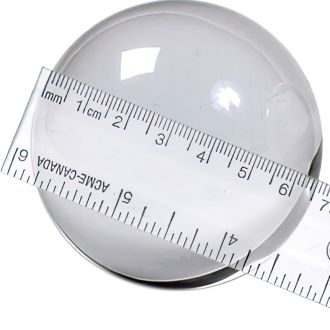

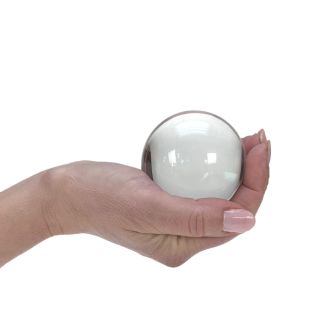
This item is sold individually .
Video presentation of a 65mm acrylic:
NetJuggler's opinion on acrylics:
Netjuggler acrylics are quality. The balls are very round and very transparent. If you are not satisfied with the quality, you can return the acrylics to us within 7 days for a refund or credit.
Technical characteristics :
- Diameter: 65mm.
- Weight: 180g.

The size of the balls:
If you ask 10 different people who practice, you will certainly get 10 different answers... But all the same, here is some advice given by Pich that I have allowed myself to rework a little with his permission. Thank you Pich for this information:
The size of the balls is chosen based on several criteria:
The visual effect : The bigger the balls, the more visible they are, the more impressive it is. On the other hand, the light effects are approximately the same with small or large balls. Visually, it is a bit of a shame to "handle" with bullets smaller than 70mm.
Figures you want to do : If you want to do 5 balls in one hand, don't take 100 mm!! 70 mm maximum. And for small hands, 65 mm will be more suitable.
Hand size : At a certain stage, when the balls are too big, we can no longer do certain figures. So the thumb-pushed pyramid flip will be more difficult to perform because the thumb may be too short. For example, Pich: hand wide open and fingers spread, measuring from the tip of his thumb to the tip of his little finger, 22cm. To start with a hand size like that, he recommends 75mm max.

The fluidity you want to have: It will be easier to be fluid with 75mm balls than with 85mm balls (for figures with 6, 7 and 8 balls).
Pleasure : Some people take more pleasure with bigger balls. Someone with experience will often tell you that they started with 70mm bullets then a batch of 75mm then a batch of 80mm then a new batch of 85mm. It's hard to go back! On the other hand, each time, it takes a rather long period of two or three months to get used to the new size. Long and difficult period (it can hurt your hands!) And during this period there is a loss of a little pleasure since we can no longer do certain figures. It's little by little that we slowly end up re-entering (almost) all of our figures.
The weight of the bullets: This is the central criterion in fact. We must choose the balls according to our muscular resistance, our propensity to get tendinitis, our practice time, our regularity, etc. The ideal is still to be able to try with the balls of other manipulators.
Our muscular resistance : to “manipulate”, you need to have relatively strong forearms and a really strong back. At the same time, the more you handle the more your body adapts to the handling. An average guy can handle 75mm. If you are less strong, then why not go down to 70mm.
Tendinitis : Some people with 70mm get tendonitis in 10 minutes! If you are predisposed to it, don't mess around with point bar acrylics! (Hey Pich, what about my acrylic business then??!!!??)
Practice time : if you practice more than 6 hours per week (this is approximately what Pich does) then don't hesitate to go big because you will quickly end up getting used to the large size of your balls. If you don't practice much, it will take you time to get used to the size of your balls (their weight and size) and you risk becoming discouraged. Like you do two minutes of manipulation, then you release everything for 2 minutes then you take them again for 2 minutes to release them completely and go juggle with something else!! ;o)
So if you don't practice much, I would recommend 70 mm. In a handling session, it can take a good half hour of practice to really get comfortable and do what you want with your balls.
Regularity of practice : this relates to the practice time but the more regular you are, the more your back will accept the handling and therefore the more you will be able to withstand big balls.
Level of practice : If you are starting out, don't take more than 75mm. Unless you're sure you're really doing a lot. Pich specifies that if he had started with 80mm, he does not know if he would have continued for long.
The pyramid with 75 mm doesn't come that quickly when you're starting out, even though it's still a relatively enjoyable figure. If you're not starting out, it's because you already have balls and it's up to you if you want bigger or not.
And to change the size of balls, it is always possible to resell your batch of second-hand balls, which makes the new batch cheaper :-).
With intensive practice, a batch of balls has a lifespan of approximately 3 years. Afterwards, they are so smashed that you can turn them into rebound balls!!

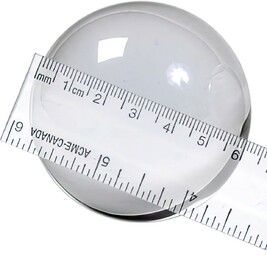
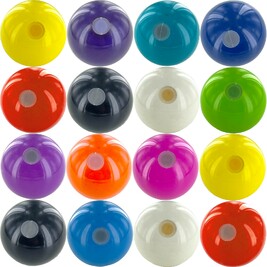
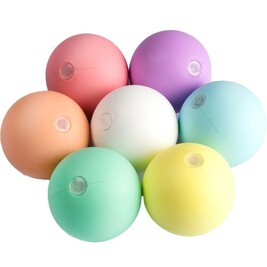
![Ribbed static ball [Ø65-90g] Ribbed static ball [Ø65-90g]](https://photos.netjuggler.net/BalleStrie/minia/balle-striee.69952.jpg)
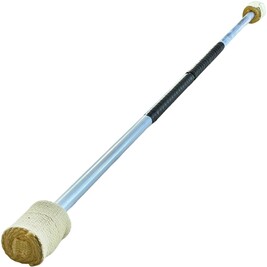
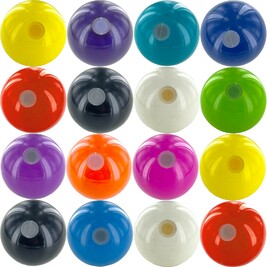

Are acrylic balls suitable for falling during contact juggling?
What size should I take after working with 130g millet-filled balls and 100/210g peach balls?
THANKS
You can juggle with acrylics, many jugglers do. However, on abrasive surfaces they can get scratched if they fall. It is also possible to "fart" the balls if they fall on gravel. If they fall hard on a sharp stone it is even possible to break an acrylic. That being said, they are extremely robust and can fall violently on the ground without breaking. As long as you have regular drops, it's almost impossible to prevent the balls from getting scratched. Generally, jugglers who use acrylic balls for juggling have a set for training and a set of balls for show use that will not fall or rarely fall on tricks that are mastered. Regarding the size, the bigger the ball, the easier it will be to handle the ball. If you are a beginner, I recommend a ball in 80mm and 100mm... Knowing that if you have small hands 100mm will be a little big and it is also a little heavy. These ball sizes will be suitable for practicing with one ball. If on the other hand you want to do multi-balls or integrate contact into juggling, then smaller balls between 65 and 75mm will be more suitable. Smaller balls like 60/65mm will be more suitable only for juggling. Then there is also a question of taste and it depends a lot on the desired effect. The advice I gave you above is to obtain ease and comfort. If you want a wow effect on a show nothing prevents you from juggling with 90mm balls but it will be technically more difficult therefore less obvious to perform technical figures without dropping your balls.
What is the best size ball for a 12 year old?
For a 12 year old, I would tend to advise starting with a stage ball with a diameter between 80 and 90mm. A larger ball allows you to be more comfortable because the ball is heavier and more stable... Otherwise, in acrylic, many beginners start with a 75mm diameter ball. It is true that it is a versatile size, but I personally find it a little small to facilitate basic movements.